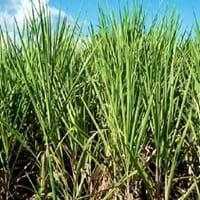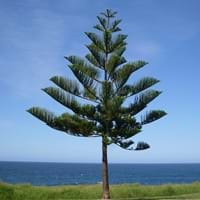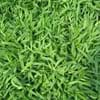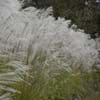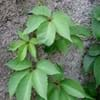Life Span
Perennial
Perennial
Origin
Southeastern Asia, Melanesia, Micronesia
Australia
Types
Not Available
not available
Number of Varieties
Not Available
Habitat
agricultural areas, Wet lands
Subtropical forests
USDA Hardiness Zone
10-15
9-11
AHS Heat Zone
12 - 9
11-1
Sunset Zone
H1, H2, 8, 9, 20, 21, 22, 23, 24
H1, H2, 17, 21, 22, 23, 24
Habit
Clump-Forming
Pyramidal
Flower Color
White hair and some brown spots on margins and at tips
Green
Flower Color Modifier
Bicolor
Bicolor
Fruit Color
Not Available
Green
Leaf Color in Spring
Green
Dark Green
Leaf Color in Summer
Light Green
Dark Green
Leaf Color in Fall
Green
Dark Green
Leaf Color in Winter
Green
Dark Green
Leaf Shape
Acicular
Needle like
Plant Season
Summer, Fall
Spring, Summer, Fall, Winter
Sunlight
Full Sun
Full Sun, Partial Sun, Partial shade
Growth Rate
Very Fast
Fast
Type of Soil
Clay, Loam, Sand
Loam, Sand
The pH of Soil
Acidic, Neutral, Alkaline
Acidic, Neutral, Alkaline
Soil Drainage
Average
Well drained
Bloom Time
Early Summer, Summer, Late Summer, Early Fall
Spring
Tolerances
Wet Site, Drought
Drought, Salt, Soil Compaction
Where to Plant?
Ground
Ground
How to Plant?
Seedlings, Stem Cutting
Tip cutting
Plant Maintenance
High
Medium
Watering Requirements
Water Deeply
Allow to dry out slightly between watering
In Summer
Lots of watering
Lots of watering
In Spring
Moderate
Moderate
In Winter
Average Water
Average Water
Soil pH
Acidic, Neutral, Alkaline
Acidic, Neutral, Alkaline
Soil Type
Clay, Loam, Sand
Loam, Sand
Soil Drainage Capacity
Average
Well drained
Sun Exposure
Full Sun
Full Sun, Partial Sun, Partial shade
Pruning
Prune ocassionally, Remove dead branches, Remove Ferns
Prune if you want to improve plant shape, Remove damaged leaves
Fertilizers
Equal amount of N,P,K, fertilize in growing season
All-Purpose Liquid Fertilizer, fertilize every 2-3 weeks while growing
Pests and Diseases
Beetles, Fusarium root rot, Head smut
Anthracnose, Branch Droop, Root rot, Yellow Leaves
Plant Tolerance
Heat Tolerance, Shade areas
Drought
Flowers
Showy
Insignificant
Flower Petal Number
Single
Not Available
Foliage Texture
Coarse
Fine
Foliage Sheen
Matte
Glossy
Attracts
Butterflies, Rats, Squirrels
Not Available
Allergy
Diabetes, Sleepiness
Not Available
Aesthetic Uses
Not Used For Aesthetic Purpose
Showy Purposes, Used as Christmas tree
Beauty Benefits
Maintains teeth healthy, Making cosmetics
No Beauty Benefits
Environmental Uses
Food for animals, Food for birds
Shelter for wildlife, Windbreak
Medicinal Uses
Aging, Antidepressant, Aphrodisiac, Appetite enhancer, Diuretic, Fatigue, Muscle Pain, Nutrients
Not Available
Part of Plant Used
Leaf Stalks, Leaves, Stem
Whole plant, Wood
Other Uses
Animal Feed, Biomass for fuel, Can be made into a herbal tea, Food for animals, Sometimes used for making wine
Used in Furniture
Used As Indoor Plant
No
Yes
Used As Outdoor Plant
Yes
Yes
Garden Design
Dried Flower/Everlasting, Edible, Feature Plant, Tropical
Container, Feature Plant, Houseplant, Screening / Wind Break, Shade Trees, Street Trees, Tropical
Botanical Name
SACCHARUM officinarum
ARAUCARIA heterophylla
Common Name
Sugarcane
Norfolk Island Pine
In Hindi
गन्ना
नोरफोक द्वीप पाइन
In German
Saccharum
Norfolk-Insel Pine
In French
Canne à sucre
Norfolk Île Pine
In Spanish
Saccharum
Norfolk Pine Island
In Greek
Saccharum
Νησί Νόρφολκ Pine
In Portuguese
Cana-de-açúcar
Ilha Norfolk Pine
In Polish
Saccharum
Norfolk Pine
In Latin
Saccharum
Insula Norfolk Pinus
Phylum
Magnoliophyta
Coniferophyta
Class
Liliopsida
Pinopsida
Family
Poaceae
Araucariaceae
Genus
Saccharum
Araucaria
Clade
Commelinids, Monocots
Not Available
Tribe
Andropogoneae
Not Available
Subfamily
Panicoideae
Not Available
Importance of Sugarcane and Norfolk Island Pine
Want to have the most appropriate plant for your garden? You might want to know the importance of Sugarcane and Norfolk Island Pine. Basically, these two plants vary in many aspects. Compare Sugarcane and Norfolk Island Pine as they differ in many characteristics such as their life, care, benefits, facts, etc. Every gardener must at least have the slightest clue about the plants he wants to plant in his garden. Compare their benefits, which differ in many ways like facts and uses. The medicinal use of Sugarcane is Aging, Antidepressant, Aphrodisiac, Appetite enhancer, Diuretic, Fatigue, Muscle Pain and Nutrients whereas of Norfolk Island Pine is Not Available. Sugarcane has beauty benefits as follows: Maintains teeth healthy and Making cosmetics while Norfolk Island Pine has beauty benefits as follows: Maintains teeth healthy and Making cosmetics.
Compare Facts of Sugarcane vs Norfolk Island Pine
How to choose the best garden plant for your garden depending upon its facts? Here garden plant comparison will help you to solve this query. Compare the facts of Sugarcane vs Norfolk Island Pine and know which one to choose. As garden plants have benefits and other uses, allergy is also a major drawback of plants for some people. Allergic reactions of Sugarcane are Diabetes and Sleepiness whereas of Norfolk Island Pine have Not Available respectively. Having a fruit bearing plant in your garden can be a plus point of your garden. Sugarcane has showy fruits and Norfolk Island Pine has no showy fruits. Also Sugarcane is not flowering and Norfolk Island Pine is not flowering . You can compare Sugarcane and Norfolk Island Pine facts and facts of other plants too.
